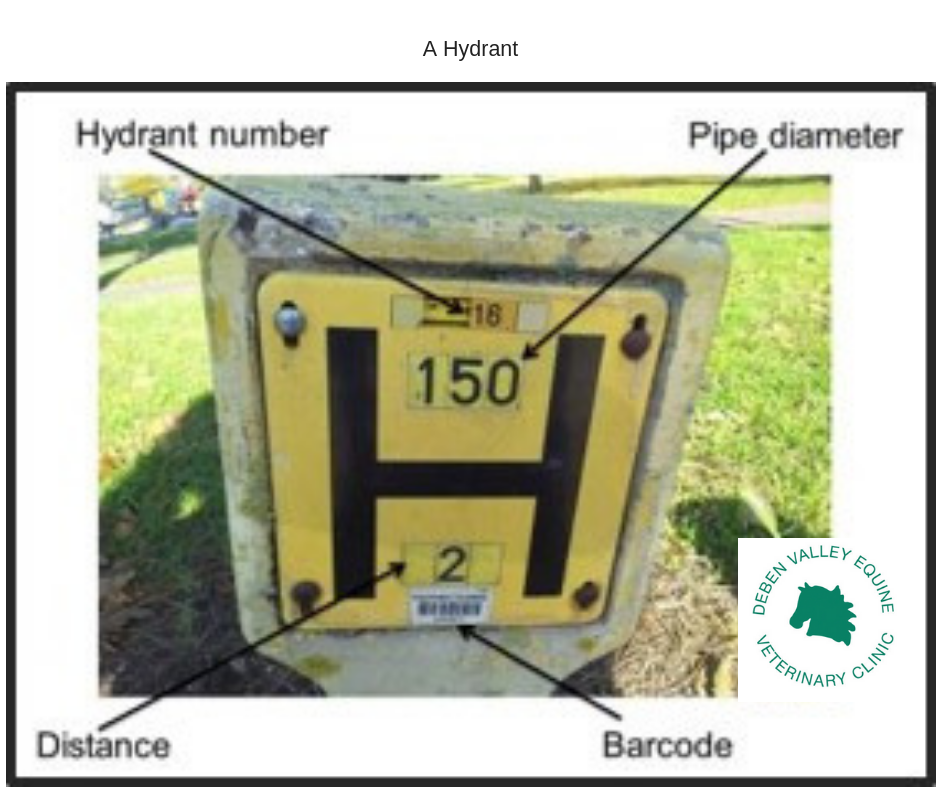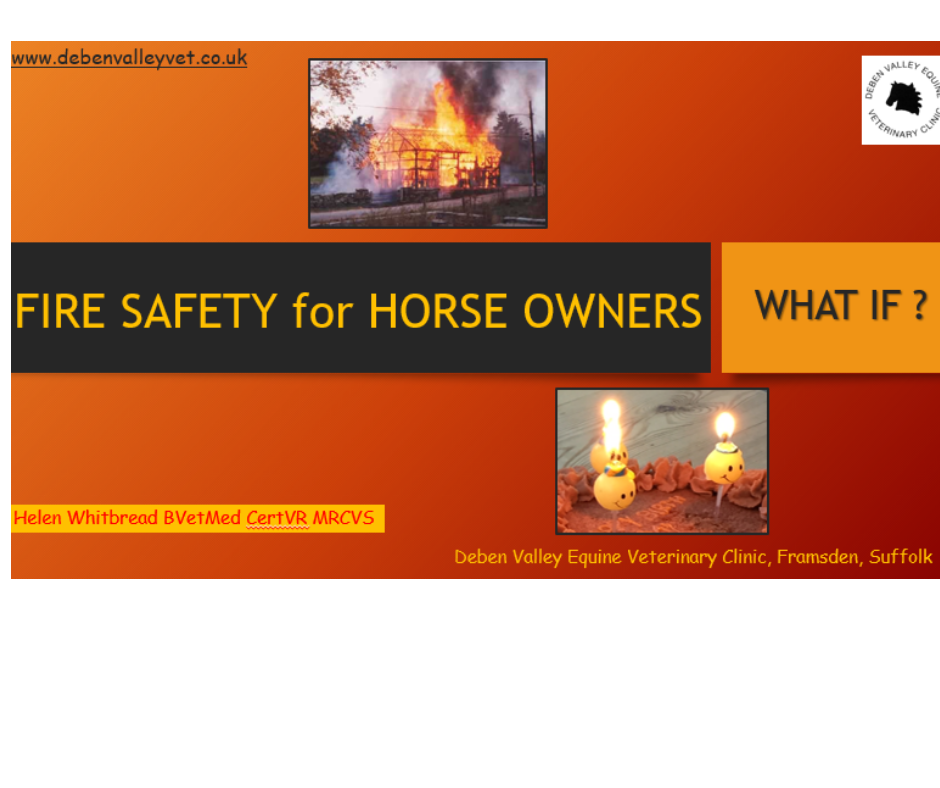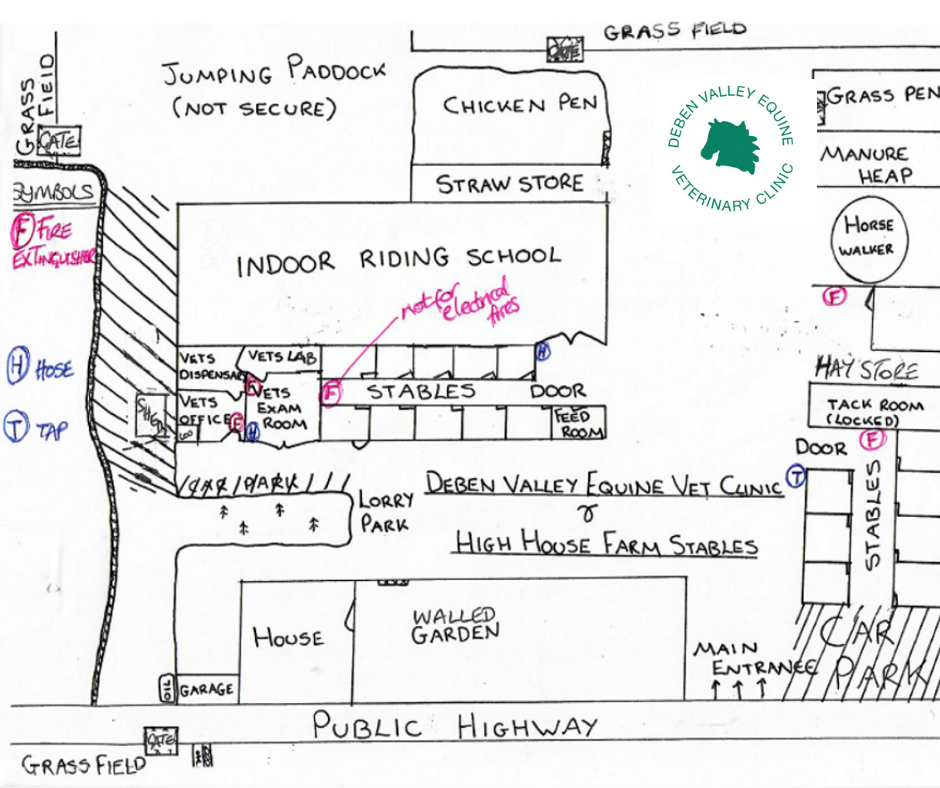Fire Safety for Horse Yards
We do not like to think of the possibility of having a fire in our stables/barn but we do need to plan for the probability. A fire can be devastating with the possibility of loss of life, beloved horses, premises, livelihood, and equipment. And then there are the problems left after a fire, such as burns, horse welfare, complications from smoke inhalation and cessation of business. Taking the time to put in place fire safety equipment, drawing a map of the premises, having a contact list, an evacuation plan and making plans for in the event of fire can help to lessen the consequences of a fire.
Signage
By making clear signs to put up around your premises you are informing everyone of where to go, what to do and how to help. Make sure you place the signs in the most appropriate places, these are kept clearly visible and most importantly current. For example, clearly sign who to call in an emergency and place in a well-used area like office entrance or at the entrance of tack room. Signs that direct action like who to call in the event of an emergency and what to say to the emergency services, for example a recognisable address and postcode are extremely useful; where to find fire safety equipment, for example fire extinguishers, hoses and the nearest water sources like ponds and hydrants around your premises. At the entrance, emergency contact details for yard owners/keyholders are a must.

Plan
You need to have a Fire Plan. This should include a detailed map of your premises including ‘You are Here’. A good place to help you draw your map is with a print out from Google maps and change the view to satellite map. This can give a good outline of your permanent structures like buildings, fences, roads/tracks and ponds which you can trace over. Also add where livestock are kept. You then need to add to your map the water supplies to include natural and hydrants, a refuge area for the horses/livestock, sign where services are on site like gas, electric and oil isolation points, mark where overhead power cables are, where are the most combustible materials e.g. hay and straw storage, and muck heaps. Your map should then be placed around your yard in visible places for all to clearly see. To find out where your nearest hydrant is email: water.hydrants@suffolk.gov.uk.
Your Fire Plan should include how to evacuate the horses onsite and where to take them, who is available to do this, where spare headcollars are kept. But each horse’s headcollar and rope should be kept outside it’s door, where torches are available in case of night conditions and if keys are needed who the key holders are. Keep useful phone numbers stored on your fully charged phone.
For your Fire Plan to be successful you need everybody who comes regularly onto the yard to read it, and have easy access to it at all times. Having a Fire Plan can save lives and vital time for the emergency services.
What information the Fire & Rescue Services need when you ring 999
- What is the nature of the incident? Is it a fire? Are there people involved? Is it close to other properties? Is it a rescue of a trapped horse?
- Tell them the precise location of the incident? Fire Service Control plot the incident by using a recognisable address location and if it doesn’t have a recognisable address, where is the nearest recognisable address? The post code of the nearest house nearest the yard or field is sufficient.
- Tell them if the horse is in water as this is an added complication and requires increased response.
- Tell them if the owner is present as they may need to be part of the decision-making process that will take place at the incident site.
- Let them know if a vet is on the scene or has been called. If a vet has been called how long before they arrive? The services cannot maintain a safe working system for rescues without a vet and will call one from their BEVA list held at control.
- Tell them if access to the scene by road is possible, but if not where is the best place for them to rendezvous with you. Will someone be on the road with a torch, so they don’t miss the drive/gateway.
Here at DVEVC we have teamed up with the Suffolk Fire & Rescue Services to produce a workshop on Fire Safety for Horse Yards. If you would like us to talk to your riding club and inform your members, then please get in touch with us. We are happy to talk to any group of horsey people.

